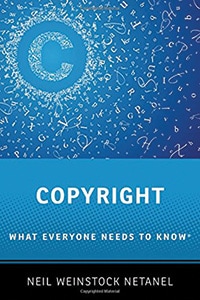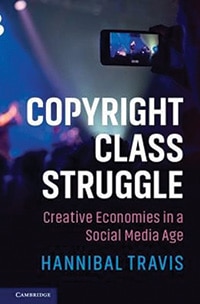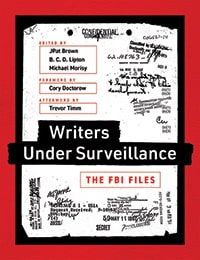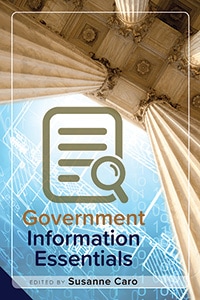
In library school, I took a graduate-level British history course as an elective. My term paper was on the Stationers’ Company in London, which set and enforced publishing industry regulations during the Tudor and Stuart periods, and the 1710 Statute of Anne, a law enacted during the reign of Queen Anne that saw copyright ownership move out of the hands of printers to authors. The battle for intellectual property rights is long—and ongoing. The books below show how it has evolved over the years to encompass a variety of concerns.
 Copyright: What Everyone Needs to Know, by Neil Weinstock Netanel, is intended for the general public and explores the various rationales for copyright. One goes back to the Statute of Anne—the first law to provide for copyright regulated by the government. Another is to compensate authors for the work of creating content. But even the use of such terms as “works” and “content” shows the evolution of copyright from protecting books and maps to covering databases, recorded sound, and digital images—all forms of content unheard of when the laws were first established. This book is a road map to the aspects of copyright law being discussed in courtrooms and legislative chambers today—a guide to the policy issues, not how the law might be applied. Oxford University Press, 2018. 248 P. $74. 978-0-19-994114-8.
Copyright: What Everyone Needs to Know, by Neil Weinstock Netanel, is intended for the general public and explores the various rationales for copyright. One goes back to the Statute of Anne—the first law to provide for copyright regulated by the government. Another is to compensate authors for the work of creating content. But even the use of such terms as “works” and “content” shows the evolution of copyright from protecting books and maps to covering databases, recorded sound, and digital images—all forms of content unheard of when the laws were first established. This book is a road map to the aspects of copyright law being discussed in courtrooms and legislative chambers today—a guide to the policy issues, not how the law might be applied. Oxford University Press, 2018. 248 P. $74. 978-0-19-994114-8.
 Netanel’s book presents a straightforward explanation of what is at stake with copyright law, but Copyright Class Struggle: Creative Economies in a Social Media Age, by Hannibal Travis, looks at the politics of internet and media governance through the lens of class, taking the position that copyright systems benefit the corporate creator. Travis examines intellectual property disparities, such as work for hire; the strength of corporate media giants in protecting intellectual property even if it draws on already established creative concepts; and the idea that upstart creators benefit from looser interpretation, despite being constricted by corporate interests. He concludes with an exploration of a universal digital library, noting the ways current copyright enforcement undermines efforts to broaden access to works, even those out of print. Cambridge University Press, 2018. 230 P. $29.99. PBK. 978-1-316-64503-1.
Netanel’s book presents a straightforward explanation of what is at stake with copyright law, but Copyright Class Struggle: Creative Economies in a Social Media Age, by Hannibal Travis, looks at the politics of internet and media governance through the lens of class, taking the position that copyright systems benefit the corporate creator. Travis examines intellectual property disparities, such as work for hire; the strength of corporate media giants in protecting intellectual property even if it draws on already established creative concepts; and the idea that upstart creators benefit from looser interpretation, despite being constricted by corporate interests. He concludes with an exploration of a universal digital library, noting the ways current copyright enforcement undermines efforts to broaden access to works, even those out of print. Cambridge University Press, 2018. 230 P. $29.99. PBK. 978-1-316-64503-1.
 Open Divide: Critical Studies on Open Access, edited by Joachim Schöpfel and Ulrich Herb, also looks at disparities in access to information but focuses on those due to open access practices. The 13 featured essayists seek to clarify the ongoing transformation of scientific communication through open access. The first part of the collection deals with general open access issues, such as the extent to which it is driven by commercial and institutional interests, new initiatives, and disruptions to the transfer of research, and a more hopeful vision of a cooperative future. The second set of essays looks at disparities in access around the world. Litwin Books, 2018. 196 P. $35. 978-1-63400-029-1.
Open Divide: Critical Studies on Open Access, edited by Joachim Schöpfel and Ulrich Herb, also looks at disparities in access to information but focuses on those due to open access practices. The 13 featured essayists seek to clarify the ongoing transformation of scientific communication through open access. The first part of the collection deals with general open access issues, such as the extent to which it is driven by commercial and institutional interests, new initiatives, and disruptions to the transfer of research, and a more hopeful vision of a cooperative future. The second set of essays looks at disparities in access around the world. Litwin Books, 2018. 196 P. $35. 978-1-63400-029-1.
 Open access takes on a slightly different meaning in Writers Under Surveillance: The FBI Files, edited by JPat Brown, B. C. D. Lipton, and Michael Morisy. In this text, it means “government files the public paid for and should be able to see,” according to the authors. The book includes selections from FBI files, obtained by MuckRock through the Freedom of Information Act, on well-known writers, from James Baldwin to Allen Ginsberg to Hunter S. Thompson. Many of the excerpts are heavily redacted, but they make interesting, sometimes humorous reading, particularly at a distance of several decades. MIT Press, 2018. 400 P. $24.95. PBK. 978-0-262-53638-7.
Open access takes on a slightly different meaning in Writers Under Surveillance: The FBI Files, edited by JPat Brown, B. C. D. Lipton, and Michael Morisy. In this text, it means “government files the public paid for and should be able to see,” according to the authors. The book includes selections from FBI files, obtained by MuckRock through the Freedom of Information Act, on well-known writers, from James Baldwin to Allen Ginsberg to Hunter S. Thompson. Many of the excerpts are heavily redacted, but they make interesting, sometimes humorous reading, particularly at a distance of several decades. MIT Press, 2018. 400 P. $24.95. PBK. 978-0-262-53638-7.
 Government Information Essentials, edited by Susanne Caro, is a guide to administering a government documents library, written for the new government documents librarian. The 17 essays are grouped into five themes. The first is a managerial overview: how to gain additional knowledge about this specialized collection and manage it while being part of a larger institution. Managing the collection—often with multiple classification systems for documents from agencies at different levels of government and in a mix of print, microform, and digital formats—requires specific accommodations explained here. Two sections cover skills for locating materials within the collection and helping others access information. The last section covers advocacy and outreach. Government information may be freely distributed and typically not subject to copyright, but it may be up to the librarian to keep it available and used. ALA Editions, 2018. 256 P. $75. PBK. 978-0-8389-1597-4. (Also available as an ebook.)
Government Information Essentials, edited by Susanne Caro, is a guide to administering a government documents library, written for the new government documents librarian. The 17 essays are grouped into five themes. The first is a managerial overview: how to gain additional knowledge about this specialized collection and manage it while being part of a larger institution. Managing the collection—often with multiple classification systems for documents from agencies at different levels of government and in a mix of print, microform, and digital formats—requires specific accommodations explained here. Two sections cover skills for locating materials within the collection and helping others access information. The last section covers advocacy and outreach. Government information may be freely distributed and typically not subject to copyright, but it may be up to the librarian to keep it available and used. ALA Editions, 2018. 256 P. $75. PBK. 978-0-8389-1597-4. (Also available as an ebook.)

